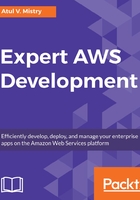
Continuous Integration and Continuous Deployment Workflow
Development and Operations (DevOps) is the buzzword in current market trends; it is a practice/approach/methodology/process for continuous software development, testing, integration, deployment, and for managing environments.
In this chapter, we will cover Continuous Integration (CI) and Continuous Deployment (CD) workflows, and also see the difference between Continuous Delivery and Continuous Deployment. We will explore various types of tool to use in the DevOps process.
CI is the workflow strategy which ensures that everyone's code changes integrate with the current repository; it endeavors to catch bugs and reduce merge conflicts.
Continuous Delivery is the next step after CI, in which developers are developing software in such a way that they can release it at any time. Sometimes people are confused about Continuous Delivery (CD) and Continuous Deployment (CD), so we will discuss this later in this chapter.
Continuous Deployment is the next step after CI or Continuous Delivery. In this process, teams produce software in a short life cycle and then release it. It helps to release software faster and more frequently.
This chapter will cover the following topics:
- An overview of DevOps
- Continuous Integration – maintaining code repository
- Continuous Delivery – automating build and self-testing
- Continuous Deployment – automating production deployment
- Tools used for DevOps processes
- CI/CD on AWS